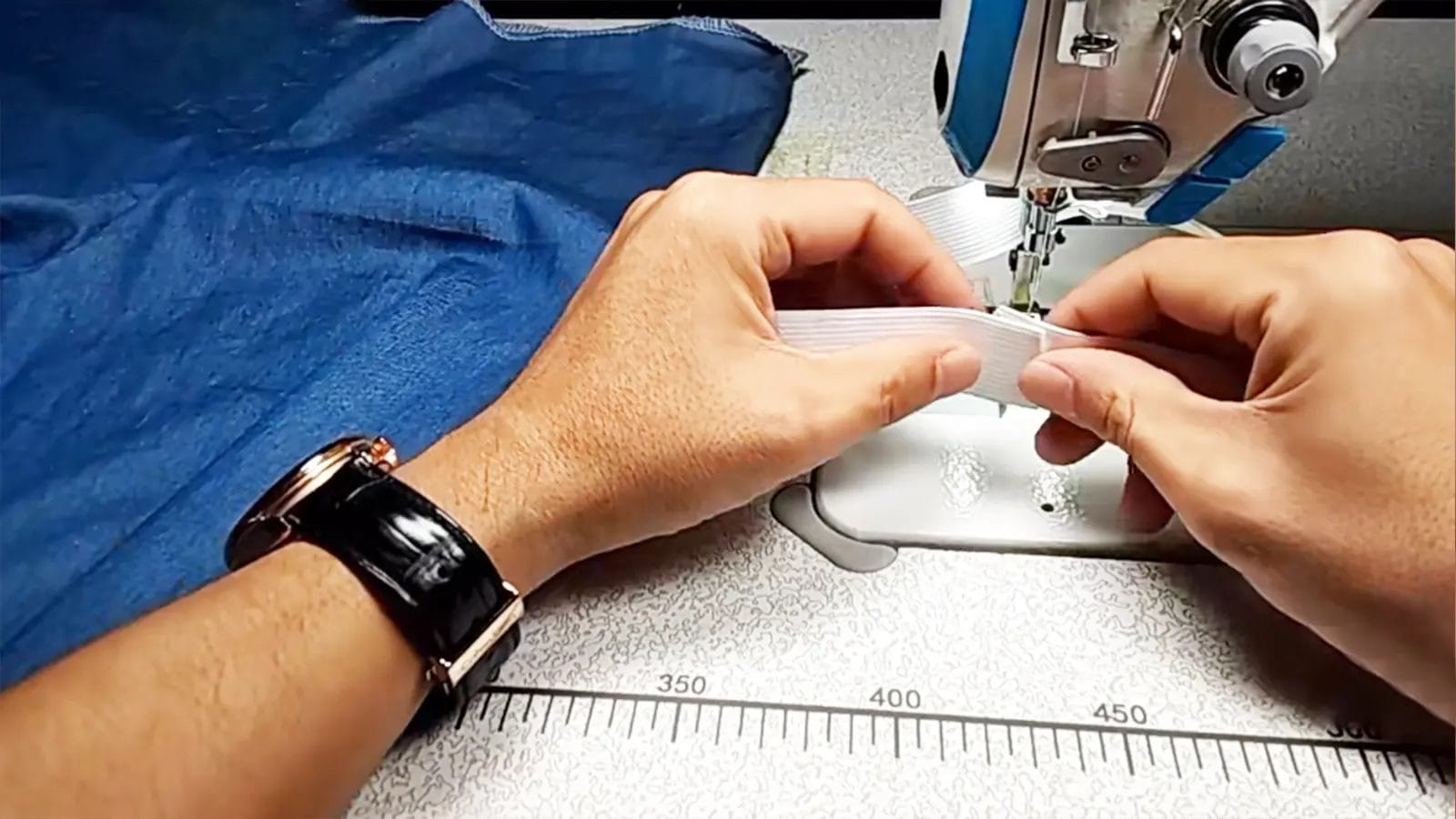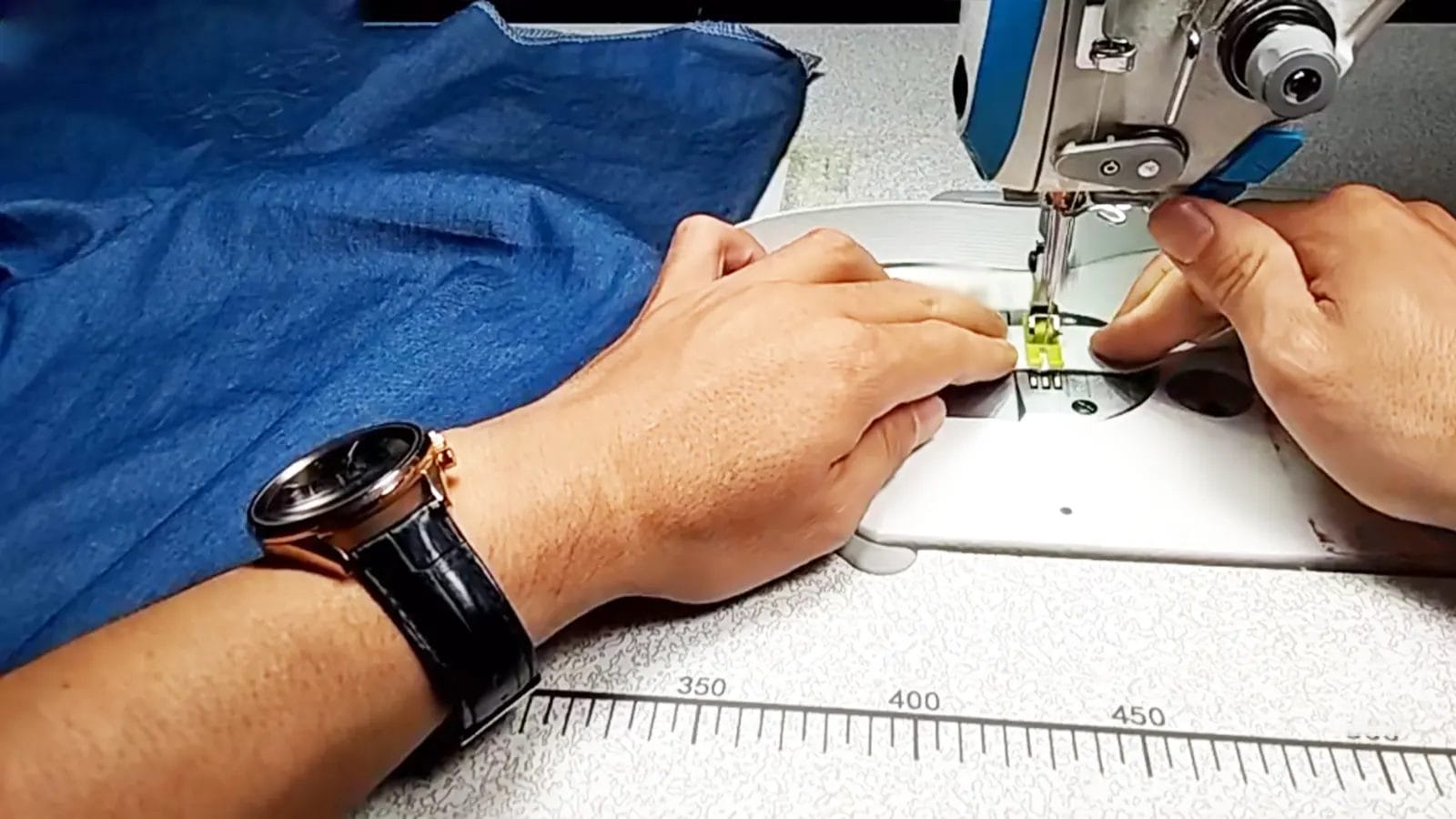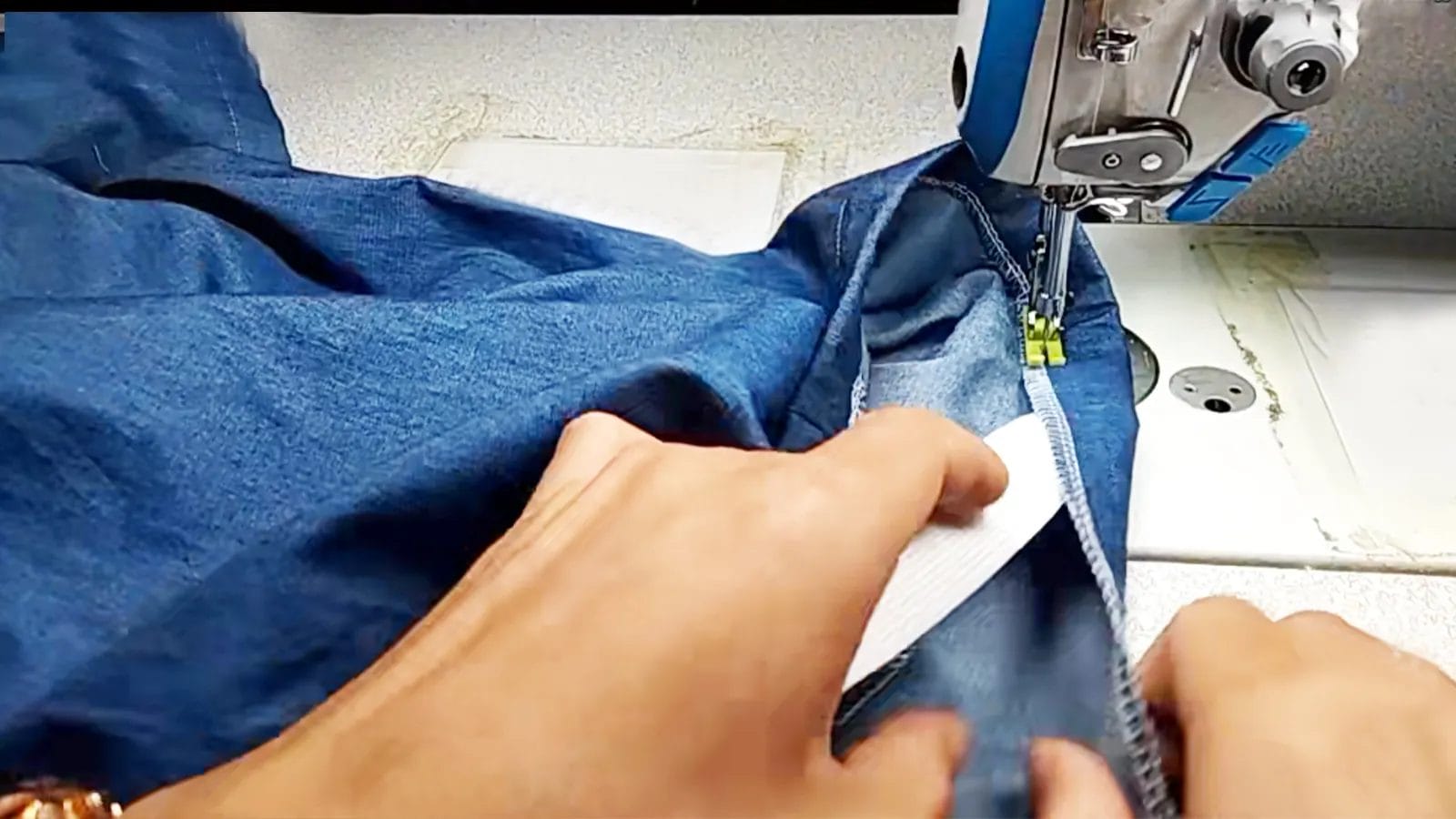Sewing elastic onto fabric is a game-changer for both novice and experienced crafters. It will transform ordinary garments into comfortable, well-fitted pieces. Whether you’re creating a casual skirt, a fitted waistband, or adding flexibility to a home décor project, mastering the technique of sewing elastic can elevate your sewing skills.
In this guide, we’ll explore two methods for successfully incorporating elastic into fabric creations. Let’s dive into the world of elastic sewing!
Key Takeaways
- Measure and cut elastic slightly shorter than the desired length to ensure a snug fit when sewn onto fabric.
- Pin elastic to fabric in evenly spaced sections to maintain balanced distribution during sewing.
- Use a zigzag stitch to securely sew elastic ends together, preventing unraveling.
- Stretch elastic while sewing it onto fabric to achieve uniform gathers and avoid bunching.
- Fold the fabric over the elastic, sew a seam, and leave an opening to insert the elastic to create a casing.
What Types of Elastic Are Available?

When you choose elastic for your sewing projects, you'll find a variety of types, each suited to different needs.
- Braided elastic is lightweight and narrow, perfect for lightweight fabrics, though it loses stretch if sewn directly.
- Knitted elastic is soft and retains its stretch, making it ideal for waistbands in medium to heavy fabrics.
- Woven elastic is your best bet for heavy-duty applications like upholstery due to its strength and durability.
- Elastic thread is thin and excellent for shirring or gathering lightweight fabrics, adding a decorative touch.
- Clear elastic, on the other hand, is transparent and stretchy. It's ideal for stabilizing seams or creating invisible gathers in stretchy fabrics.
Knowing these differences helps you choose the right elastic for your project.
Method 1: How to Sew Elastic on Fabric Directly

First, we'll detail how to attach elastic to fabric seamlessly.
Step 1: Measure and Cut Your Elastic
First, decide on the length of elastic needed by measuring the body area where you'll apply it. Subtract 2-4 inches for a snug fit. Keep in mind the width of the elastic, as it should match your garment's requirements.
Stretch the elastic slightly before measuring it to account for its natural tension. Once you've determined the correct length, cut the elastic to this adjusted measurement.
Overlap the elastic by 0.25 to 0.5 inches. Make multiple passes over the overlapped area to reinforce the connection.
Step 2: Pin the Elastic to Your Fabric
Pin the elastic to the wrong side of the fabric at the 12, 3, 6, and 9 o'clock positions. This guarantees even distribution and prevents bunching.
Secure the elastic with straight pins, ensuring it lies flat against the fabric without twisting. As you pin the elastic, stretch it slightly to match the fabric's length, aligning it with the edge of the fabric.
Step 3: Sew the Elastic
With the elastic pinned, use a zigzag stitch to sew elastic directly onto the fabric. Stretch the elastic as you sew, matching the fabric's length to prevent bunching and guarantee an even gather.
Once you reach the starting point, overlap the stitching by 1 inch to reinforce the elastic.
Step 4: Conceal the Elastic Band
Fold the elastic over towards the inside of the fabric to conceal it. Make sure that the elastic is lying flat, and the fold is even all the way across.
Step 5: Sew Along the Folded Fabric
Finally, it's time to secure the elastic by sewing along the bottom edges. Selecting a zigzag stitch allows the elastic to stretch comfortably. As you sew, ensure the fold is neat and the fabric is smooth under the presser foot.
Stretch the elastic evenly to match the fabric's length, preventing puckering or uneven gathers. Sew approximately 1/8 inch from the folded edge, maintaining a clean finish. Overlap the stitch by 1 inch at the end to reinforce the elastic and sew it together securely.
Method 2: How to Sew Elastic on Fabric with a Casing

After exploring the first method, let's move on to the second method by using a casing.
Step 1: Create a Casing
Measure the width of your elastic and add 0.5 inches (1.3 cm) to determine how much fabric to fold over for the casing. This additional fabric ensures that the casing comfortably accommodates the elastic.
Fold the fabric over by this calculated amount, making sure the raw edge is tucked neatly inside.
Mark a 1-2 inch opening on the casing to insert the elastic later. With the fabric folded, sew a straight stitch 0.25 inches from the folded edge, but leave the marked opening unstitched.
Step 2: Insert the Elastic
Measure the body area accurately to guarantee the elastic fits comfortably. Subtract 2-4 inches from this measurement for a snug fit—this is your adjusted length.
Once satisfied, secure the elastic with a safety pin about 0.5 inches from the end to keep it from slipping later.
Push the safety pin inside the casing opening to insert the elastic. Then, use the pin to guide it through the casing, gently pulling the fabric along as you go.
As you work, use your fingers to stretch and manipulate the fabric, helping the elastic move smoothly through. Make sure the elastic doesn't twist while you're feeding it through.
Once the elastic comes out, remove the safety pin and sew the ends of the elastic together.
Step 3: Close the Opening
After securing the elastic ends, it's time to close the opening in the casing to guarantee a neat finish.
Sew across the opening, ensuring the elastic is fully enclosed. Sew as close to the edge of the casing as possible to minimize visible stitching on your garment.
Finally, press the closed casing with an iron on a low setting to smooth out any wrinkles, giving your project a professional touch.
Troubleshooting Common Issues
When sewing elastic on fabric, you might encounter issues like twisted elastic or uneven gathers.
Twisted Elastic
When the elastic and fabric aren't aligned properly, you might end up with twisted elastic that disrupts the garment's fit and comfort.
To prevent this, pull the elastic taut as you insert it into the fabric casing. Secure one end of the elastic in place using a safety pin and guide it carefully through the casing.
Before sewing the ends together, gently pull the elastic through to check for any twists. If you find the elastic twisted, remove it, straighten it out, and try again.
Using wider elastic or a larger casing can also help minimize twisting, guaranteeing a smooth and comfortable fit.
Uneven Gathers
You might encounter uneven gathers if the elastic isn't distributed or stretched consistently. To prevent this, divide the fabric and elastic into evenly spaced sections, such as quarters or eighths. Pinning them in place guarantees uniform tension as you sew.
When stitching, stretch the elastic fully and evenly to avoid tighter or looser areas. Before starting, check the tension by gently pulling the elastic to confirm it gathers the fabric evenly.
If you notice uneven gathers despite these precautions, remove the stitches carefully. Redistribute the elastic and resew, maintaining consistent tension throughout.
By doing this, you'll achieve a smooth, even gathering, which will enhance the overall appearance of your project.
Conclusion
Sewing elastic onto fabric can seem tricky at first, but with practice, you'll get the hang of it. Whether you're sewing directly or using a casing, each approach offers flexibility and strength.
Remember to measure accurately, stretch evenly, and troubleshoot any issues. With these steps, you'll master sewing elastic, enhancing your sewing projects with a professional finish and lasting durability. Keep experimenting and enjoy the process!
Learn more sewing tips on the Longan Craft Blog, and dive into the fabric world with Longan Craft!
FAQs
What Is the Best Stitch for Sewing Elastic?
When sewing elastic, use a zigzag stitch. This stitch allows for a stretch without breaking the thread. Set the stitch width to 2.5 millimeters for secure attachment, ensuring durability and flexibility in your project.
What Tension Do You Sew Elastic On?
Set your sewing machine tension between 2 and 3 for elastic. If stitches look loose, raise the tension to around 4. Always test on scrap fabric first to ensure the elastic stretches properly and holds securely.
Do You Need Special Thread to Sew Elastic?
You don't need a special thread to sew elastic. Use a high-quality polyester thread for its stretch and durability. Match the thread's stretchability with the fabric and elastic. Avoid heavy-duty thread unless the elastic is thick.


0 comments